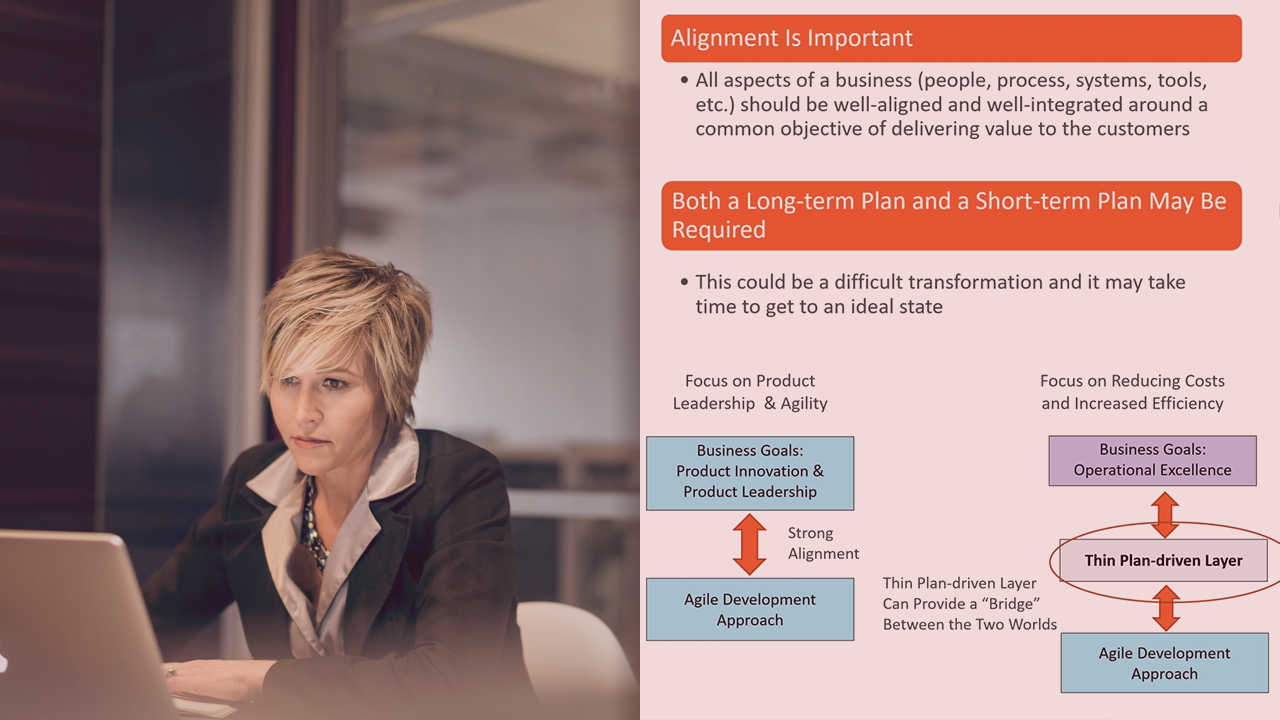- Course
Planning and Managing Enterprise-level Agile Transformations
Applying an Agile approach at an enterprise often involves some level of organizational transformation and takes a lot of skill. This course will help you understand how to plan and manage an enterprise-level Agile transformation.

- Course
Planning and Managing Enterprise-level Agile Transformations
Applying an Agile approach at an enterprise often involves some level of organizational transformation and takes a lot of skill. This course will help you understand how to plan and manage an enterprise-level Agile transformation.
Get started today
Access this course and other top-rated tech content with one of our business plans.
Try this course for free
Access this course and other top-rated tech content with one of our individual plans.
This course is included in the libraries shown below:
- Core Tech
What you'll learn
It is well-known that an Agile development approach is not likely to work effectively unless it is well-aligned with a company’s business. Successfully applying Agile at an enterprise level can be complex and requires knowledge of how the business works at different levels of management; how the development process works (Agile, plan-driven, or hybrid); and how the two fit together. In this course, Planning and Managing Enterprise-level Agile Transformations, you will learn the approach needed to customize your development process to fit the nature of the company’s business. First, you’ll discover why an enterprise-level Agile transformation is necessary, Next, you’ll identify the typical obstacles for doing a successful Agile transformation, Then, you’ll explore the role of change management in developing a successful Agile transformation. Finally, you’ll learn what factors to consider in developing an implementation plan for an Agile transformation. When you're finished with this course, you will have a good foundation of knowledge to know how to plan and manage a successful enterprise-level Agile transformation.

